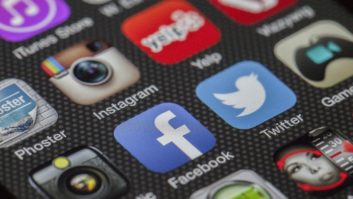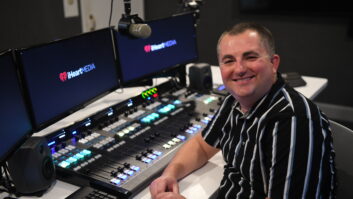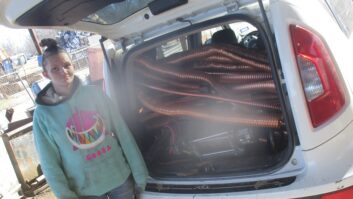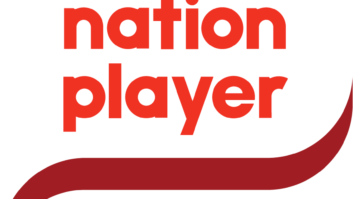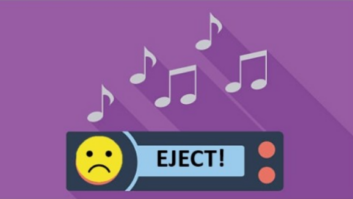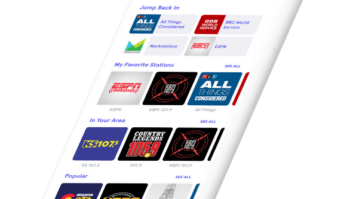
This is one in a series of articles about radio’s role and future in the evolving automobile dashboard. To read other articles, visit https://www.radioworld.com/dashboard.
Radio is changing. The way listeners consume media (including radio) is transforming as well. This is not news to anyone who has been watching the industry for the past five or 10 years, but these changes are starting to reach into areas we might not have expected.
For a number of years, AM radio was king. Listeners turned to the local AM radio station for news, entertainment and a connection to the personalities at the station as well as their local community.
Next, FM radio came into the marketplace. Initially there was not much interest in the technology and receiver adoption was slow. Eventually FM radio became standard and more music formats shifted to FM as AM stations slowly shifted to news and talk.
While listening to radio continues to be a big part of media consumption, an increasing number of options have become available, allowing listeners to create their own individual media environments. Early options included cassettes, then CDs and MP3s. Technology improved to the point where listeners could take their content with them anywhere.
All of these technologies required the listener to actively construct a playlist from their content. Radio, on the other hand, is a continuous stream of content that the listener does not really have to work to construct.

This changed when subscription services like satellite radio entered the picture. Suddenly the listener was able to choose from dozens of program streams with music and talk content tailored to a specific theme, genre or topic. These program streams were available anywhere the listener had a satellite radio and a clear view of the sky.
GAME CHANGER
Internet audio streams had been available for quite some time by this point, but listening to them required that the user be near a computer.
Fast-forward to the present, when smartphones are everywhere. With smartphones came high-speed wireless data and apps that allow users to have an unlimited selection of on-demand streaming content at their fingertips, either customized by the listener or “curated” by content providers.
Some of the first apps simply streamed the audio from individual radio stations and Internet broadcasters. Other apps such as TuneIn and iHeartRadio aggregate streams from a number of broadcasters. The biggest change came with services like Pandora, Spotify and Rdio that allow users to tailor their own “stations” based on their personal musical tastes.
The car continues to be one of the top locations for content consumption. It is in this environment that we are seeing the biggest changes and will likely have new opportunities to engage with listeners.
Historically, technologies that were first only available in the home then found their way into the car. The adoption of media technologies in the car has closely mirrored the availability of those technologies in other portable environments. Car radios initially had only AM, then AM/FM, followed by AM/FM/cassette and AM/FM/cassette/CD. Some of these CD players even read discs with MP3 files burned on them.
After this progression of changes in the car dashboard, manufacturers started to add a small but key feature: the Auxiliary audio input. This simple feature gave consumers a universal way to bring their smartphone audio into the car without resorting to less-than-ideal methods such as RF modulators, cassette adaptors or burning MP3 files to disc.

CAR “RADIO”
For the most part, the car radio has remained largely unchanged over the years: two knobs, a few buttons and a small display. Media sources have been added and some are now starting to go away. Cassette decks in new cars are all but gone; CD slots are starting to follow.
A number of new cars on the market have replaced the traditional user interface with LCD touchscreens that incorporate everything from the car’s entertainment system to climate controls and other vehicle preferences. There may still be dedicated buttons and knobs for some of these functions, but I suspect there will be fewer of these going forward.
These new “infotainment” systems brought additional features, such as USB ports and Bluetooth. This allowed the smartphone to further integrate with the car, including features like hands-free calling and control of the media library on the device. The system can now display things like title, artist and album art from the device as well. Very few in-car systems do not have these integration features as standard now.
Not only can these new systems connect to smartphones, many of them are connected to the Internet, either via an onboard cellular modem or through the smartphone’s data connection. This connection can be used for everything from delivering content to software updates and diagnostics. Systems such as GM’s “OnStar” have connected drivers via cellular links for quite some time, but the capabilities have continued to become more advanced.
All major vehicle manufacturers are moving in this direction. This connectivity isn’t the future — it’s here.
“APPS” NOW IN-CAR

Adding an Auxiliary input allowed consumers to bring audio from their favorite apps into the car, but the smartphone itself has still been the primary user interface for those apps. The newest generation of infotainment systems allows these apps to be integrated into the system’s interface.
Pandora and other apps can now be directly accessed from the infotainment system. Suddenly the car’s interface has truly become an extension of the smartphone and the apps on the smartphone. This trend will continue as the systems become less driven by dedicated hardware and more software-based.
With the rich metadata available from other media sources, broadcasters need to ensure they are providing the same level of user experience. Broadcast radio is one of the few remaining sources that do not provide title, artist and album art by default. Listeners have come to rely on this data as part of the overall experience.
RBDS can provide text data for analog FM broadcast, but HD Radio ultimately is the path, in my view, to providing the fullest user experience with features such as album art. HD Radio is now standard on an increasing number of infotainment systems.
For quite some time, there has been a shift from being “broadcasters” to “content providers” — and the actual delivery platform, whether it is via broadcast or Internet, radio or smartphone, becomes irrelevant.
With so many content options now available, how do broadcasters ensure they maintain a place in the car? Listeners are going to seek out the content they want to hear, regardless of where it comes from. It’s all about the content. Listeners are their own best program director.
Many broadcasters have strayed from their long-time mission of providing local and relevant content. This is evident by the FCC’s initiatives directed at ensuring localism. If a listener can get the same music or content a station is playing elsewhere, the only reason the individual would choose radio is content that he or she can’t get anywhere else — that “connection” that I mentioned at the beginning of this article. Simply airing 24/7 automated satellite feeds from syndicators isn’t going to cut it.
Keep it local. Keep it relevant.
Shane Toven is director of engineering at Wyoming Public Media.





